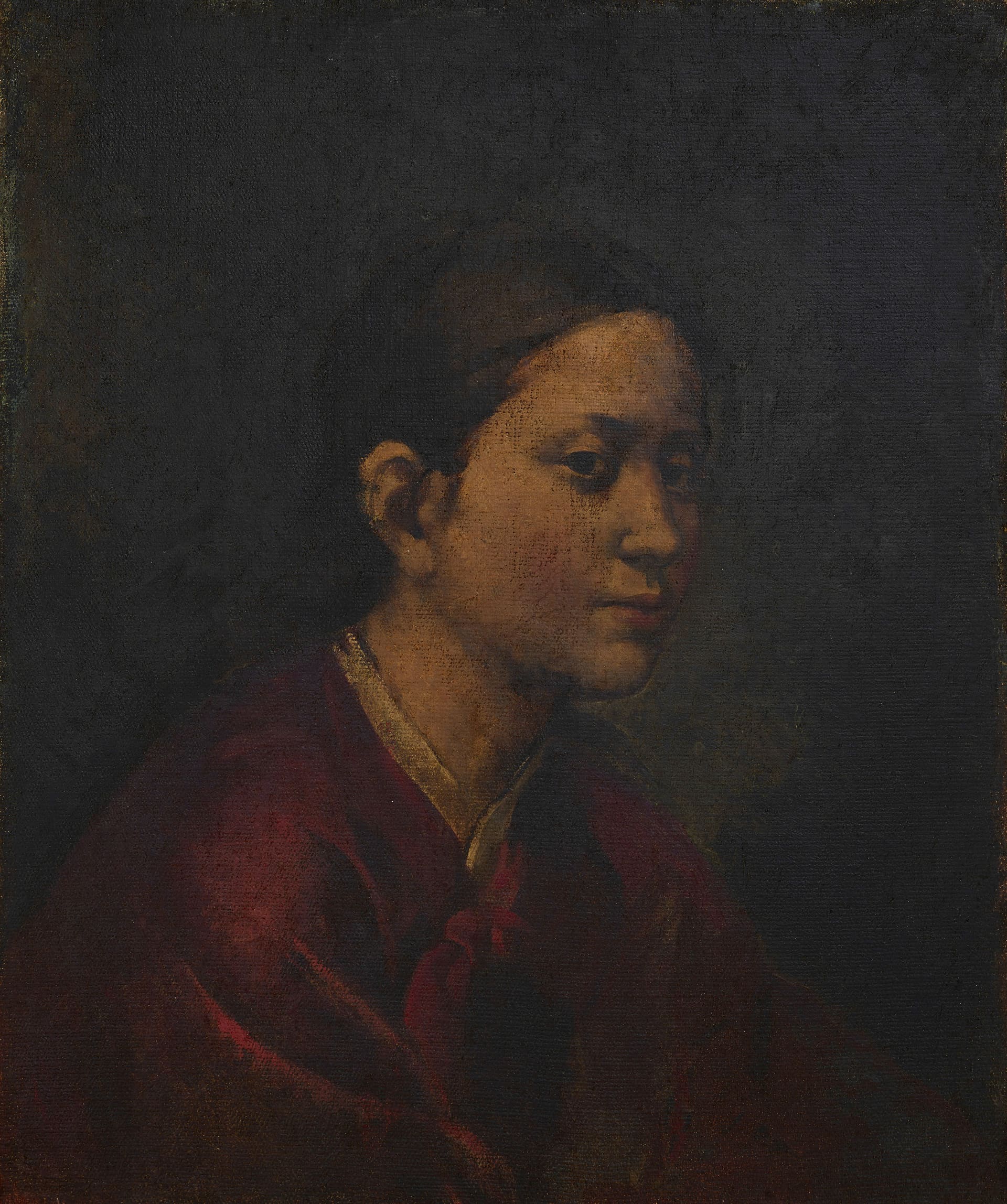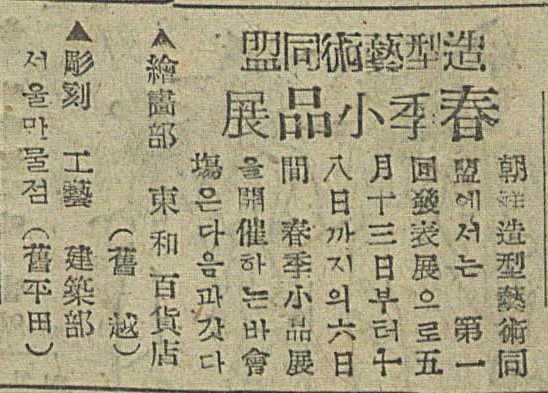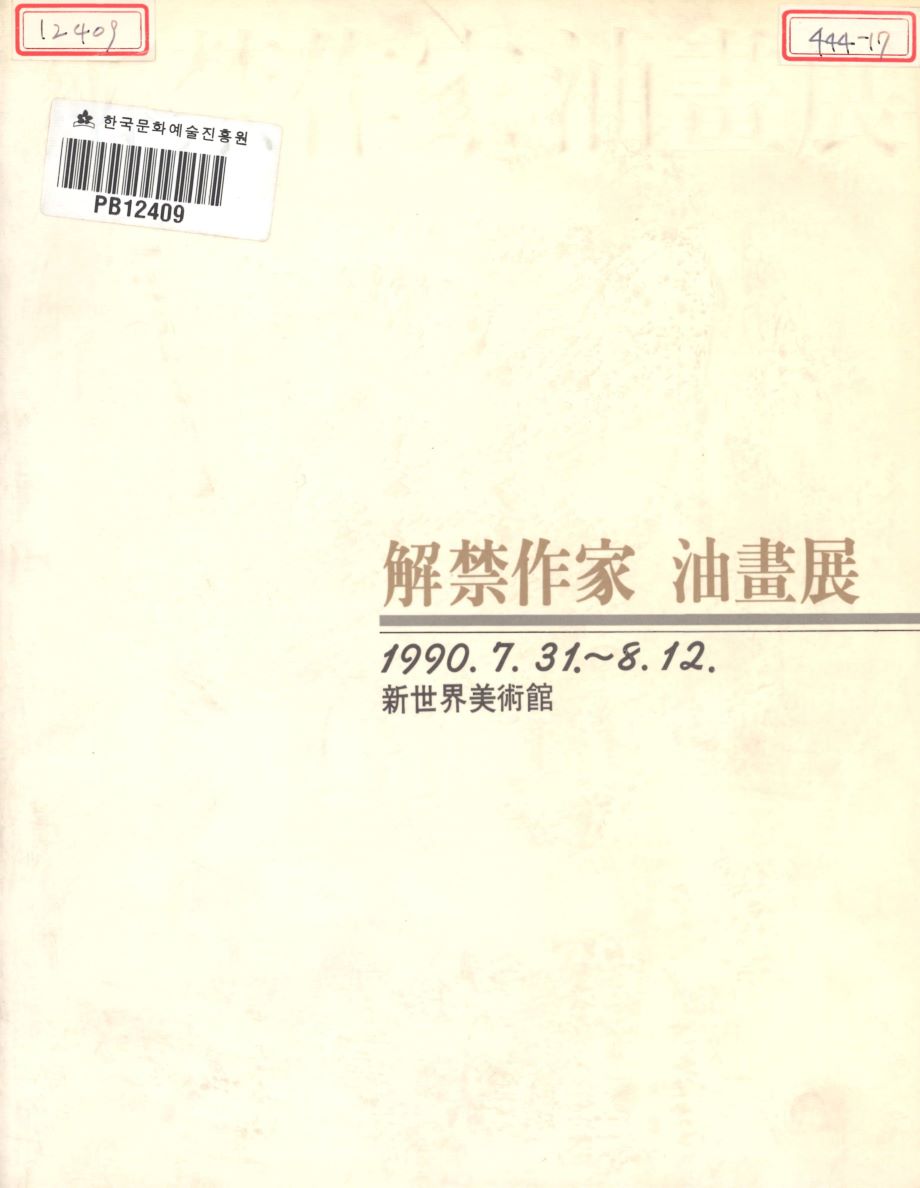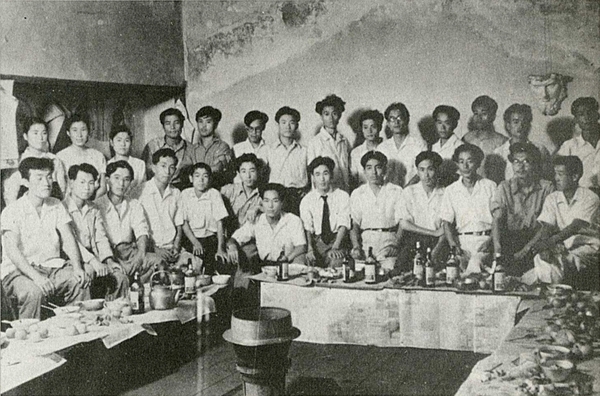
Lee Qoede, Portrait of a Lady, 1940s, Oil on canvas, 45.5×38cm. MMCA collection
Lee Qoede
* Source: Multilingual Glossary of Korean Art. Korea Arts Management Service
Related
-

Korean Art and Culture Association
An artist organization formed in June 1947. The chairman was Lee Qoede, and its membership comprised ex-members of the left-wing Korean Artist Federation (Joseon misulga dongmaeng): Lee Kyusang, Kim Insoong, Hong Ilpyo, Eom Doman, Kim Jaeseon, Son Eungsung, Lim Wangyu, Shin Honghyu, Park Youngseun, Cho Byungduk, Lee Bongsang, Lee Haesung, Nam Kwan, Lim Gunhong, Lee Insung, Park Seong-gyu, and Han Hongtaik. The founding of the association caused controversy. Because of its centrist political stance, both the left-wing Korean Art Alliance (Joseon misul dongmaeng) and the right-wing Korean Art Association (Joseon misul hyeophoe) levied criticism. Shortly after its founding, the Korean Art and Culture Association held its first exhibition at the Dong Hwa Gallery in August. The second, third and fourth exhibitions were held at the Dong Hwa Gallery as well: the second in April 1948, the third in November that same year, and the fourth in June 1949.
-

Korean Plastic Arts Federation
An organization formed in 1946 by numerous established artists. The core membership included Jeong Hyeonung, Gil Jinseop, Kim Kichang, Kim Man-hyeong, Lee Qoede, and Yoon Hee-soon, who left the Korean Art Association (Joseon misul hyeophoe) because of their opposition to the right-wing beliefs of Ko Huidong. The association was the parent organization of the Independent Art Association, Dangu Art Academy, Cheongahoe, Joseon Sculptors Association, and Korean Craftspersons Association (Joseon gongyega hyeophoe). The alliance held exhibitions and published bulletins, but about eight months after its establishment, it merged with the Korean Artist Federation (Joseon misulga dongmaeng) to form the Korean Art Alliance (Joseon misul dongmaeng). The Korean Plastic Arts Federation (Joseon johyeong yesul dongmaeng) was a rare politically moderate organization that accepted many artists in a national art community that was sharply divided along right-wing and left-wing divisions.
-

Artists who defected to North Korea
Artists who defected to North Korea refer to artists who moved their spaces of artistic activities to north of the armistice line during the period immediately after Korea’s liberation from Japan on August 15, 1945 until the signing of the truce agreement. Prior to the lifting of the bans on artists who were abducted by or defected to North Korea in 1988, they were labeled traitors for “betraying the South Korean system and choosing the North Korean one” or “choosing communism.” Their works were deemed “detrimental to ideas,” so it was forbidden to mention them. However, contrary to the reasons for restrictions imposed by the government, recent studies have revealed that the defection of most artists to North Korea resulted not from ideological choices or alignment with political system of North Korea, but from unavoidable circumstances caused by the war and division of the country. Accordingly, the scope of research on artists who defected to North Korea can vary depending on researchers or research environments. It discusses the conflict and movement between the two spaces of Seoul and Pyongyang or South and North Korea and further includes those that the South Korean government defined as artists who chose the North Korean system. The number of artists who defected to North Korea amounts to roughly sixty to eighty. In recent years, there has been a view that the so-called consecutive lifting, which differentiates and selectively relieves artists who defected to North Korea voluntarily, those abducted to North Korea, those residing in North Korea, and those who returned to North Korea after defection to South Korea, is an act of high-level public security control. This is seen as a non-academic power tyranny and violence against intelligence that insults the particularity of art, leading to voices to dismantle and prospectively reconstruct the existing frame of the lifting of bans on abducted artists and artists who defected to North Korea.
Find More
-

1950 Art Association
An alliance of artist associations established in 1950 by representatives Kim Whanki, Nam Kwan, and Lee Qoede and secretary general Kim Byungki. Groups excluding the Great Korean Art Association [Daehan misul hyeophoe] formed the 1950s Art Association for deconstruction for the purpose of the development and promotion of national art. While differing perspectives exist on the exact mission of the association, it is often considered to have embodied the desire of these established artists to progressively develop national art, regardless of their ideological differences. The association planned an exhibition for July 1, 1950, but it failed to come to fruition because of the outbreak of the Korean War. While the association was active for a short period of time, it left behind a legacy of public education programs on art theory, through endeavors such as initiating a series of lectures on contemporary painting. The solidification of the anti-communist agenda during the war caused the majority of the members of the Korea Art Alliance to depart for North Korea, and others, with the exception of Kim Whanki and Nam Kwan, joined the Great Korean Art Association. The association is therefore seen as an independent organization that opposed the establishment authority centered on the National Art Exhibition (Gukjeon).
-

Seongbuk Painting Academy
The Seongbuk Painting Academy is an art research institute founded by Western-style oil painter Lee Qoede in 1947. From 1946 to 1947, the institute was located within a forty-meter square space in Donam-dong rented by Lee Qoede. In 1948, the institute moved to Myeongnyun-dong, where it stayed until 1949. The institute recruited students to teach various subjects including anatomy, art theory, croquis, and figure drawing. Students also participated in Lee Qoede's masterpiece A Crowd series. Kim Suhbohng, Kim Souckchin, Kim Tschang-Yeul, Nam Kyungsuk, Shim Chookcha, Lee Youngeun, Lee Yonghwan, Chang Seongsoun, Jeun Loijin, Jeong Jeonghui were all educated at the institute. In 1950, Lee Qoede co-founded the Seoul City Art Research Institute with Lee Haesung to continue his pedagogical method.
-

Lee Yeosung
Lee Yeosung (1901-?, pen name Cheongjeong) was an independence activist, painter, politician, and journalist. His real name was Lee Myeonggeon. After graduating from Jungang High School in 1918, he lived in China. When the March First Independence Movement occurred in 1919, however, he returned to Korea and was involved in the anti-Japanese movement. He later went to Japan and enrolled in Rikkyo University in Tokyo. While serving as a member of the socialist organization Bukseonghoe which he formed in 1923 with Kim Jongbeom, Song Bongu, and Byeon Huiyong, Lee defected to China in 1926. After returning to Korea in 1929, he joined the Chosun Ilbo newspaper company in the following year as a reporter. There, he worked as head of the social affairs department and investigation department, and at the same time he was engrossed in studying ancient art. Lee Yeosung, who studied painting almost entirely on his own, held a two-person exhibition with Lee Sangbeom (pen name Cheongjeon) in 1935. In 1936, he contributed in serial form a writing entitled Traveling to Sinmido Island with illustrations in Chosun Ilbo newspaper. In 1944, he joined the anti-Japanese secret society Alliance for Founding a Nation [Geonguk dongmaeng] founded by Yeo Unhyeong, and after Korea’s liberation from Japan he served as a member of the Socialist Labor Party. After defecting to North Korea in 1948, Lee published books and articles, including Joseon misulsa gaeyo (A summary of Korean art history, 1955). In 1957, he served as a professor at Kim Il Sung University. The first research book on the history of Korean clothing, Joseon boksikgo (Examination of Korean clothing), which he wrote in 1946, is significant in that it suggests methodologies for studying clothes and defines the genealogy of Korean clothes. Lee Yeosung enjoyed painting realistic landscapes [sagyeong sansu] based on real scenery. From 1936 onward, he produced a vast body of historical paintings, most of which have been lost. He exerted a considerable artistic and ideological influence upon his younger brother Lee Qoede.






